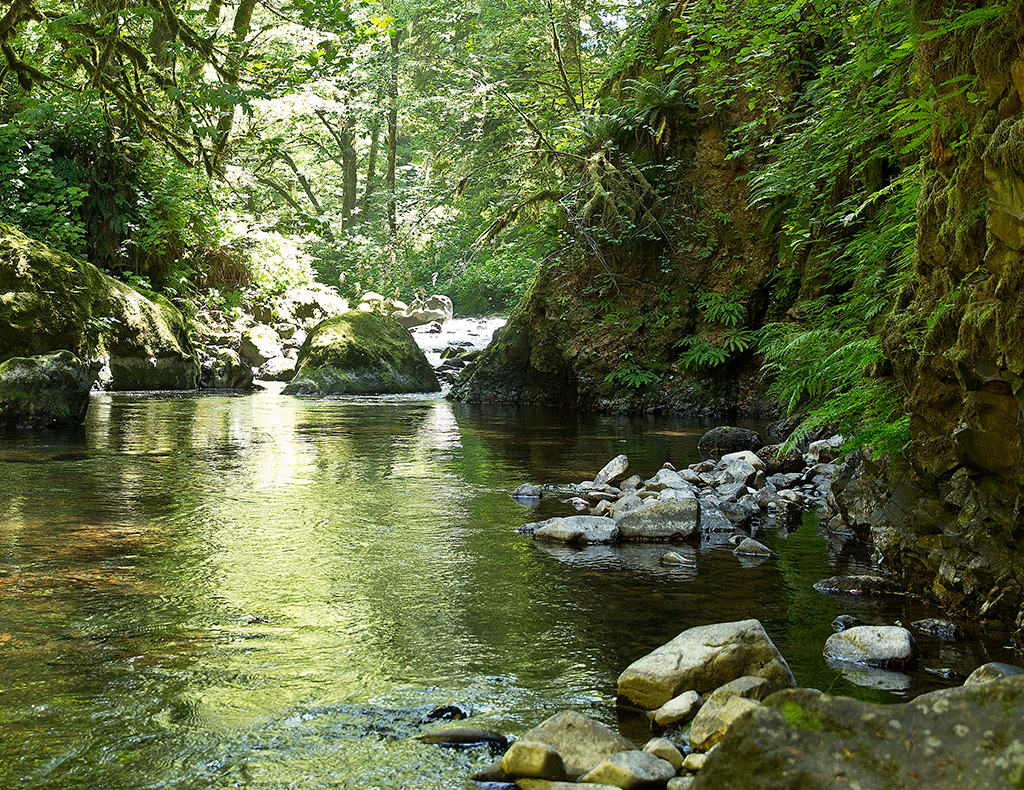SUSTAINABLE FORESTS
Public Access
Recreational opportunities on Hampton Family Forests
Most of Hampton’s forestland in Oregon and Washington is open to the public. While overnight camping and campfires are prohibited, our lands can be used for wildlife viewing, hiking, biking, hunting, fishing, and foraging year-round, except during periods of high fire danger. On occasion certain roads might also be gated due to forestry operations. If you decide to venture out into a private working forest, please respect the work and the environment. Please keep out of active harvest areas and always be mindful of fire danger. Visit our Recreation page for public access opportunities and updates.

Trees and Bees
Pollinator habitat enhancement
Hampton’s working forests provide raw materials for a variety of value-added wood products but they also create a wide range of habitat opportunities and ecosystem services as trees grow and mature. Recent studies have revealed that timber harvest sites can act as important pollinator habitat by opening up areas of forest canopy for habitation by plant and animal species that require more sunlight to thrive. Hampton’s pilot pollinator habit enhancement project seeks to further improve that habitat by creating food and nesting conditions on harvest sites that are ideal for important pollinator species. At the moment our efforts are focused on native bees.
Sustainable Forests
We take stewardship to heart
We manage our forestland to help meet our need for wood materials without compromising long-term habitat values or our ability to continue the cycle of growth and harvest for generations to come. We only grow native tree species and working forestlands are always replanted for future generations. New trees spend the next 40-60 years providing habitat and high levels of water quality as they grow until it’s time once again to harvest and renew the cycle. At Hampton, we endeavor to find a better way every day in all we do. That extends to forest management. We have a deep respect for the land we manage and pride ourselves on being good stewards and good neighbors. We were partners in the 2022 Oregon Private Forest Accord, a historic agreement to overhaul the state’s forest laws and enhance conservation measures for salmon and other aquatic species on private forestland.


Sustainable Forestry Initiative
Sustainability Certification
The goal of sustainable forestry is to combine the continuous growing and harvesting of trees with the protection of wildlife, plants, soil and water quality and a wide range of other conservation goals. Our forestland management practices are certified through the Sustainable Forestry Initiative® (SFI) in the U.S. and Canada. We practice a land stewardship ethic that includes high standards to protect water quality, biodiversity, fish and wildlife habitat, and species at risk.
Modern Forestry
Long-term, science-based management
Modern forest management is based on decades of extensive research by hydrologists, biologists, ecologists, soil scientists, and silviculturists and follows rigorous laws and regulations established by state and federal agencies. Today, we have a system that produces renewable building materials while maintaining wildlife habitat, air and water quality, and numerous recreational opportunities. As the field of forestry continues to evolve, Hampton regularly partners with local universities to better understand and improve forestry science and technology. By providing for a multitude of values, working forests are a unique and important part of the Pacific Northwest’s economic and environmental sustainability.

Forest Landscapes
Keeping the Pacific Northwest green and growing
Because only a small portion of the wood we need to operate comes from our forestlands sustainable harvests on public and other private forestland is critical to our ability to do business in the Pacific Northwest. Hampton is a long-time advocate for working forests and balanced, science-based management of our public forests. All forests, including working forests, produce cleaner water than any other land use. From British Columbia to Oregon, roughly half of the land base is forestland. Despite significant population growth, forest cover in the region has remained relatively unchanged over the past 150 years, thanks in part to modern forestry.



